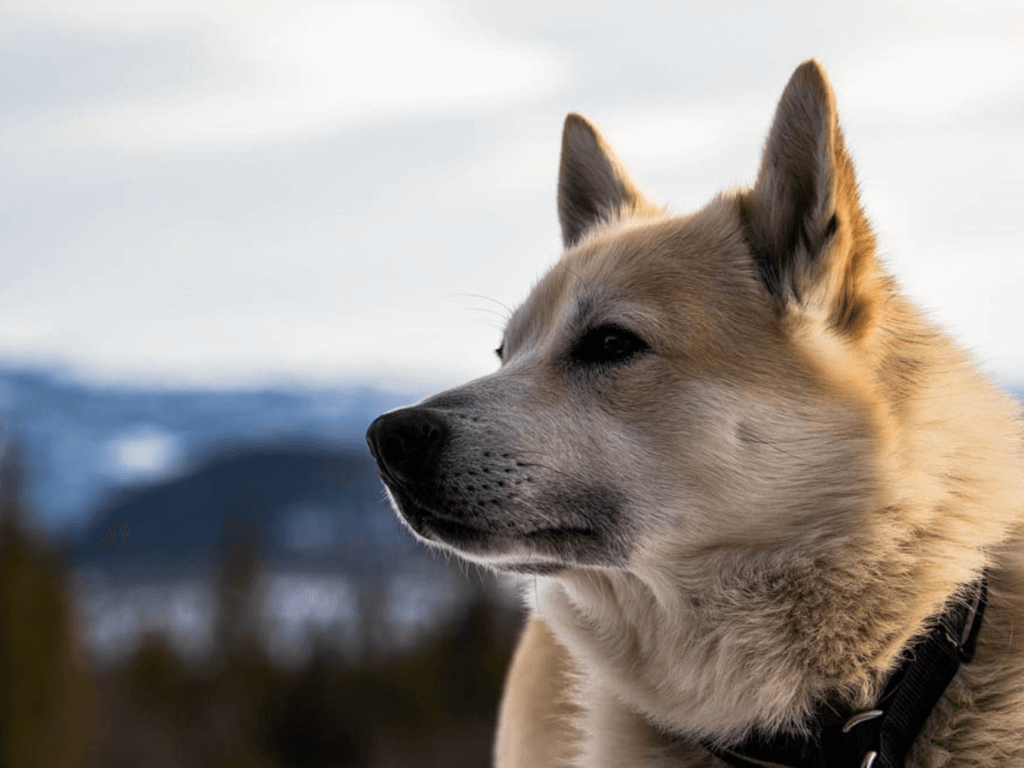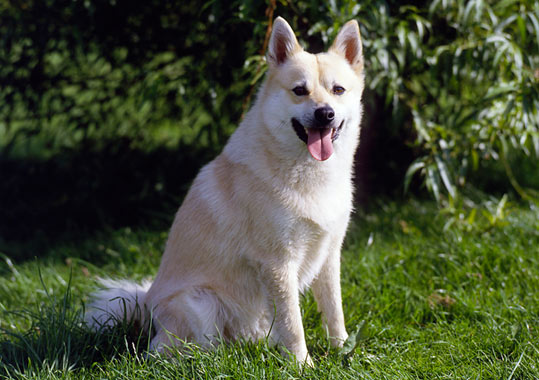
The Norwegian Buhund (pronounced BOO-hund) is a hardy and intelligent spitz-type herding dog originating in the rugged countryside of Norway. Its lineage stretches back to the days of the Vikings, with archaeological evidence placing Buhund-like dogs in Viking burial sites—believed to accompany their masters into the afterlife.
Bred primarily as an all-purpose farm dog, the Buhund was used for herding sheep and cattle, guarding livestock, and even protecting the home. Its versatility and natural herding instincts made it indispensable to Scandinavian farmers for centuries. The breed’s name comes from the Norwegian word “bu,” meaning “farm,” and “hund,” meaning “dog.”
Today, the Norwegian Buhund is appreciated not just for its working abilities, but also as an energetic and loyal family companion.
The Buhund remains relatively rare outside Scandinavia but has a dedicated following in the United States, the United Kingdom, and other parts of Europe. Its cheerful demeanor, trainability, and manageable size have contributed to a gradual rise in popularity among active dog lovers.
Though not a household name, the Buhund has begun to gain recognition in agility, obedience, and herding trials. The breed was officially recognized by the American Kennel Club (AKC) in the Herding Group in 2009.
A medium-sized dog with a classic spitz appearance, the Norwegian Buhund is compact, well-balanced, and always alert.
Coat:
Thick, weather-resistant double coat with a soft undercoat and harsh outer layer.
Color:
Common coat colors include wheaten (ranging from pale cream to bright orange) and black. A few white markings are allowed.
Size:
• Height: 16–18.5 inches (41–47 cm)
• Weight: 26–40 lbs (12–18 kg)
Build:
Athletic and squarely proportioned with a strong, arched neck and deep chest.
Head & Expression:
Wedge-shaped head with a keen, confident expression and dark, oval-shaped eyes.
Ears:
Pointed and erect, giving the breed an alert look.
Tail:
Tightly curled and carried over the back, typical of spitz breeds.
Norwegian Buhunds are cheerful, confident, and full of energy. They excel in homes where they can be mentally and physically engaged.
Intelligent and Trainable:
Quick learners with a strong desire to please, they do well in obedience, agility, and even scent work.
Energetic and Active:
These dogs need daily exercise and mental stimulation to stay happy and avoid boredom-related behaviors.
Vocal and Alert:
Buhunds are known for being talkative. They’ll bark to alert you or communicate excitement—great for watchdog duties.
Affectionate and Friendly:
They thrive on companionship and are typically good with children and other pets when socialized early.
Independent Yet Devoted:
While they can be independent thinkers, they form strong bonds with their families and want to be involved in daily activities.

• All-Around Working Dog:
Perfect for people who want a dog that can herd, play, hike, and even compete in dog sports.
• Compact but Rugged:
Small enough for many homes, but built for stamina and outdoor adventure.
• Easy Grooming Needs:
Despite a thick coat, brushing a few times per week typically keeps shedding under control.
• Good Temperament:
Friendly, loyal, and generally sociable with people and pets.
• Highly Trainable:
Eager to learn and quick to pick up commands, especially with positive reinforcement.
Training:
Start early and keep sessions engaging. Their intelligence requires variety to prevent boredom.
Exercise:
Expect to provide at least 60–90 minutes of exercise per day, including off-leash play, running, and mentally stimulating games.
Grooming:
Brush several times per week, especially during seasonal shedding. Baths are needed only occasionally.
Nutrition:
Feed a balanced, high-quality diet suited for active, medium-sized dogs. Watch portions to avoid excess weight gain.
Mental Stimulation:
Provide puzzles, scent work, trick training, or tasks—they love having a job to do.

The Norwegian Buhund is generally healthy and long-lived, with a lifespan of 12–15 years.
Potential Health Issues:
• Hip dysplasia (rare)
• Cataracts
• Hereditary eye diseases
• Von Willebrand’s disease (a bleeding disorder—screening recommended)
Reputable breeders screen for these conditions and prioritize the breed’s overall vitality and temperament.
Compared to the Icelandic Sheepdog:
Both are Nordic herding breeds, but the Buhund tends to be more independent and vocal. The Icelandic Sheepdog is slightly more affectionate and playful.
Compared to the Finnish Lapphund:
Lapphunds are fluffier and larger, with a calmer demeanor. Buhunds are leaner and have a more energetic, driven personality.
Choose this breed if:
• You’re active and want a dog that can keep up
• You enjoy training and dog sports
• You’re prepared for a vocal, lively companion
• You appreciate a loyal, intelligent breed with strong working instincts
Not Ideal For:
• Sedentary households
• Those looking for a quiet dog
• Owners unprepared to meet the breed’s exercise and mental stimulation needs
United Pet Club is here to help with resources for breeders, training guides, and support for active pet families. If you're ready for a bright, energetic, and affectionate dog, the Norwegian Buhund may be the perfect choice.